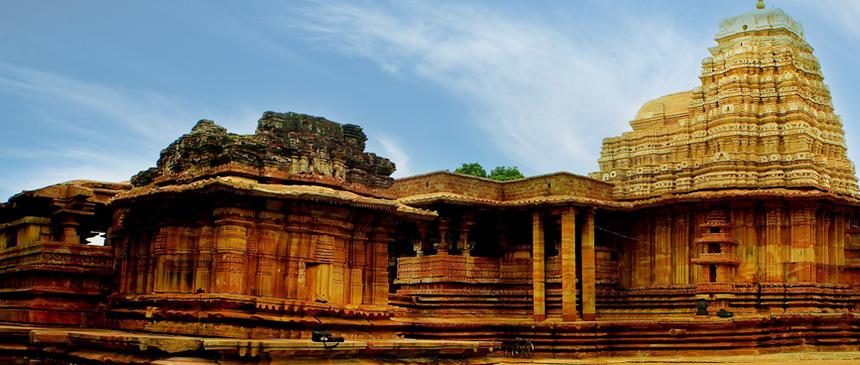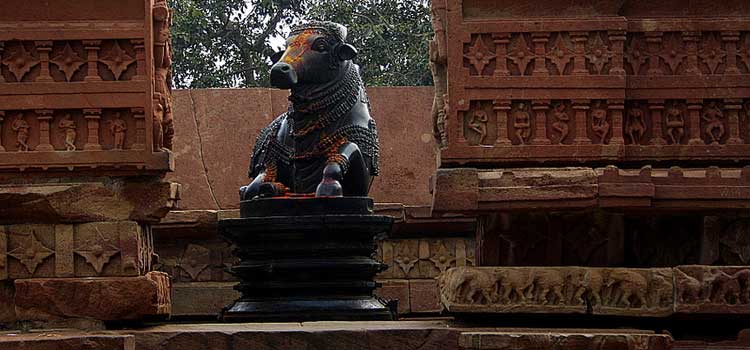Ramappa Temple (Kakatiya Rudreshwara Temple):
Welcome to the heart of ancient India, where the exquisite Ramappa Temple stands as a testament to the brilliance of medieval architecture. In this journey, we will unravel the mysteries, history, and awe-inspiring craftsmanship behind this magnificent temple.

Table of Contents
History of Ramappa Temple:

Rudreshwara Temple, popularly known as Ramappa Temple, is located in the village of Palampet, Mulugu District, approximately 210km north-east of Hyderabad and 67 km away from Warangal, in the State of Telangana. It is the Kakatiya-style Hindu temple dedicated to the main Shiva temple in a walled complex built during the Kakatiyan period (1123–1323 CE) under rulers Rudradeva and Recharla Rudra. Construction of the sandstone temple began in 1213 CE and is believed to have continued over some 40 years. The building features decorated beams and pillars of carved granite and dolerite with a distinctive and pyramidal Vimana (horizontally stepped tower) made of lightweight porous bricks, so-called ‘Floating Bricks’, which reduced the weight of the roof structures.
The temple’s sculptures of high artistic quality illustrate regional dance customs and Kakatiya culture. The Ramappa Cheruvu, a water reservoir constructed by the Kakatiya, was built in accordance with the ideology and practice supported by dharmic texts, which state that temples should be built as an integral part of a natural setting, which includes hills, forests, catchment areas, streams, lakes, springs, and agricultural lands.
Exploring the Spiritual Significance
Architectural Spirituality

The temple’s architecture itself serves as a testament to the spiritual ethos of its builders. Every intricately carved pillar, every sculpted deity, and each carefully designed detail contribute to the spiritual ambiance. The very layout of temple reflects a deep understanding of sacred geometry, believed to enhance the spiritual experience of devotees
Spiritual Symbolism in Architecture
Everywhere of RAMAPPA Sanctuary conveys profound imagery, offering a visual story of the heavens The carvings on the sanctuary walls portray legendary stories as well as convey significant and profound lessons. From divine creatures to legendary animals, each figure fills in as a medium to pass on profound messages and social qualities.
The Sanctum Sanctorum Experience
The sanctum sanctorum, the innermost sacred space of the temple, is the epicenter of spiritual energy. As devotees enter this hallowed chamber, they are enveloped in an aura of divinity. The rituals performed within this sacred space create a connection between the human and the divine, fostering a sense of spiritual awakening and communion.
Rituals and Practices
RAMAPPA TEMPLE hosts a myriad of rituals and practices, each contributing to the spiritual vibrancy of the space. The rhythmic chants, the fragrance of incense, and the offering of prayers create an atmosphere conducive to meditation and introspection. Devotees partake in these rituals, seeking spiritual solace and a deeper connection with the divine.
Cultural and Religious Harmony
The spiritual significance of RAMAPPA TEMPLE transcends religious boundaries, fostering a sense of cultural and religious harmony. The temple has served as a sacred space for people of various faiths, exemplifying the inclusive nature of spirituality. It stands as a symbol of unity, where individuals from different walks of life come together to experience a shared sense of the divine.
Preservation of Spiritual Heritage
Preserving the spiritual heritage embedded in the RAMAPPA TEMPLE is a paramount endeavor. The ongoing efforts to conserve and protect the temple ensure that future generations can continue to witness and partake in its spiritual legacy. Visitors are encouraged to engage respectfully with the temple, recognizing its significance beyond its architectural grandeur. RAMAPPA TEMPLE is not merely a historical relic; it is a living testament to the spiritual beliefs and practices of its time. As one explores its sacred spaces, the spiritual significance becomes palpable, inviting all who enter to experience a profound connection with the divine.
UNESCO’s World Heritage Status
On July 25, 2021, the temple was inscribed as a UNESCO World Heritage Site as “Kakatiya Rudreshwara (Ramappa) Temple, Telangana
Location: Palampet, Mulugu District,Telangana
Timings: 06:00 am to 06:00 pm
FAQs (Frequently Asked Questions)
Is photography allowed inside the RAMAPPA TEMPLE?
Yes, photography is permitted. However, visitors are encouraged to be respectful and avoid using flash to preserve the temple’s artwork.
What is the significance of RAMAPPA TEMPLE’s floating brick technique?
The floating brick technique enhances the temple’s stability, allowing it to endure earthquakes and the test of time.
Who built Ramappa Temple?
The temple complex was built by Recherla Rudra Reddy during the reign of Kakatiya ruler Ganapati Deva.
What is RAMAPPA TEMPLE’s historical connection to the Kakatiya Dynasty?
RAMAPPA TEMPLE was built under the patronage of the Kakatiya Dynasty, showcasing their support for arts and culture during their reign.
Are there any specific rituals performed in the Ramappa Temple?
Yes, Ramappa Temple hosts regular rituals and ceremonies, providing a spiritual ambiance for devotees.
Where is Ramappa Temple?
Ramappa Temple is located in the village of Palampet, Mulugu District, approximately 210km north-east of Hyderabad and 67 km away from Warangal.

“Great job!”